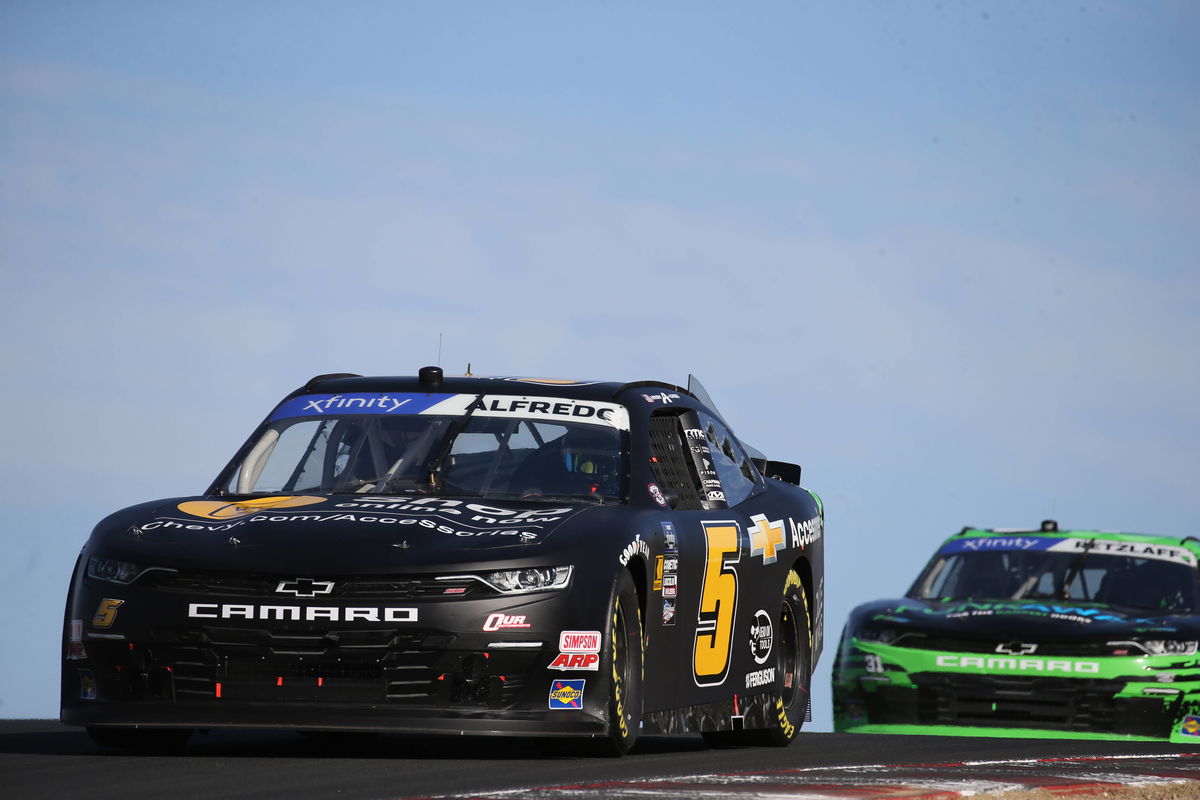
Imago
SONOMA, CA – JUNE 08: Anthony Alfredo 5 Our Motorsports Chevy Accessories Chevrolet during the Zip Buy Now, Pay Later 250 NASCAR, Motorsport, USA Xfinity Series race on June 8, 2024, at Sonoma Raceway in Sonoma, CA. Photo by Matthew Bolt/Sonoma Raceway/Icon Sportswire AUTO: JUN 08 NASCAR Xfinity Series Zip Buy Now, Pay Later 250 EDITORIAL USE ONLY Icon240608685

Imago
SONOMA, CA – JUNE 08: Anthony Alfredo 5 Our Motorsports Chevy Accessories Chevrolet during the Zip Buy Now, Pay Later 250 NASCAR, Motorsport, USA Xfinity Series race on June 8, 2024, at Sonoma Raceway in Sonoma, CA. Photo by Matthew Bolt/Sonoma Raceway/Icon Sportswire AUTO: JUN 08 NASCAR Xfinity Series Zip Buy Now, Pay Later 250 EDITORIAL USE ONLY Icon240608685
When NASCAR updated its Cup Series to the revolutionary “Next Gen” in 2022, Chevrolet stood as the only manufacturer with no actual updates. In fact, the only major change to their model came when the Camaro replaced the SS in 2018. Even though the Bow Tie didn’t have a suitable replacement, the final Camaro rolled off the assembly line back in 2023. General Motors stopped its production the next year and re-branded the Chevy Camaro body as ZL1 in the 2025 NASCAR Cup Series. But the rumor mill churned out whispers of the OEM sharing new designs soon. Now, it looks like bigger changes are on the horizon.
Watch What’s Trending Now!
According to a tweet by the insider, The Daily Downforce, NASCAR’s Elton Sawyer has confirmed that Chevrolet’s current Camaro-based body won’t appear at the 2026 Daytona 500, making way for a fresh design. During an interview with SiriusXM NASCAR Radio on Tuesday morning, Sawyer revealed, “We started working back with the folks there at GM probably over a year or so ago now…
“Then they started submitting the body parts, and then they go to a wind tunnel test where all the OEMs, our original equipment manufacturers, are there and watch how that test unfolds at the wind tunnel. So all the boxes have been checked and looking forward to seeing the new Chevrolet when we get to Daytona in 2026.”
ADVERTISEMENT
Article continues below this ad
NASCAR’s Elton Sawyer confirmed Chevrolet completed every step of the approval process for its new Cup Series body, set to debut at Daytona in 2026. Find out more on The Daily Downforcehttps://t.co/jD4J8kIy2U pic.twitter.com/NZftCjWjmw
— The Daily Downforce (@dailydownforce) September 30, 2025
ADVERTISEMENT
Article continues below this ad
For teams like Hendrick Motorsports, it means adapting setups, but overall, it could draw in new fans by aligning more closely with modern automotive trends. Two years after Next Gen was introduced, Toyota updated its Camry XSE, and Ford updated its Mustang to the Dark Horse in 2024. While Sawyer or GM did not name names, they have certainly kept their fans in mind. And those fans might have an idea of what the next look will be like.
Some fans have theorized that it could be radically different from what the OEM currently runs, while others think it might be a refinement of the current Camaro ZL1 1LE design, the one introduced with the new tag to ZL1 after the 2022 Next Gen introduction.
Still, questions linger about other tweaks coming alongside this body swap. With the body sorted, attention turns to under the hood. Could more power be next?
2026 horsepower boost in sight?
Talks of bumping up horsepower in Next Gen cars have been heating up as NASCAR admitted to exploring boosting power, particularly on short tracks, as early as 2026. Currently, the Gen 7 cars are tuned to roughly 650-670 HP, but some in the field believe a rise toward 750 HP would make a noticeable difference, with more throttle, more tire wear, and more drama. However, OEMs’ preferences regarding cost, durability, and branding influence what NASCAR allows.
Consequently, Brad Keselowski shared his take on the Stacking Pennies Podcast, saying, “Well, you know, it looks like NASCAR is going to change the rules next year to where we’re like 740, 750 [horsepower]. It’s not quite 100, because, right now, technically, they’re at 670, but realistically, they’re like 685, 690, so.”
His insight comes from years at the wheel, including his time with RFK Racing, where he’s seen how current limits curb aggressive moves. The modest increase that is predicted by Keselowski will be able to create a real difference without the redesign of engines. These modifications are meant to handle criticism of the short-track race’s lackluster performance by fans, which provides drivers with more means of fighting to get ahead. When instituted, it could have an equalizing effect between Chevy, Ford, and Toyota.
Elton Sawyer reinforced the dialogue, stating, “We’ve discussed many times about horsepower on the short tracks and that’s something that’s an ongoing discussion with our industry stakeholders, Toyota, Ford and Chevy, as well as our engine builder and our race teams.” As NASCAR’s senior vice president of competition, Sawyer’s role involves balancing input from all sides, drawing from past adjustments like the 2023 short-track package. This collaborative approach could lead to targeted boosts, helping sustain excitement as the series eyes global growth.
ADVERTISEMENT
ADVERTISEMENT
ADVERTISEMENT
ADVERTISEMENT


